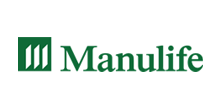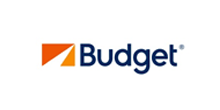About Engineers Canada
Engineers Canada is the national organizations of the 12 provincial and territorial engineering regulators who license the country’s more than 290,000 professional engineers. We serve these regulators by delivering national programs to ensure the highest standards of engineering education, professional qualifications and professional practice.
We are the voice of our members in national and international affairs and promote greater understanding of the nature, role and contribution of engineers to society.
President’s Message
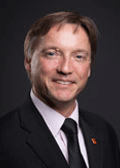
The past year has been a time of very positive renewal for Engineers Canada. We have initiated a number of significant and positive changes within the organization to position us to serve our member regulators better than ever before. Engineers Canada has committed to ensuring that we never lose focus on our core functions of accreditation, qualifications, and regulatory support, and to bring transparency, accountability and value to all that we do.
Our accreditation system remains one of the most important services that Engineers Canada performs on behalf of our member regulators. However, we know that our system must evolve quickly to keep pace with the changes that have taken place in the delivery of engineering education. The status quo is simply untenable. This remains our greatest single challenge at Engineers Canada, and it is a challenge that must be overcome together with the involvement of our regulators and the higher education institutions that we accredit.
Engineers Canada has also continued its work to produce a number of national model guidelines for the profession, and is further facilitating the development of tools and data to assist the regulators in the assessment of the qualifications of foreign trained applicants for licensure. Our regulators must have the support they need to ensure that all those seeking licensure are treated in a fair, consistent, and defensible manner regardless of where they received their training and experience. We can achieve this by working together through Engineers Canada.
In addition to our work towards our goal of facilitating regulatory excellence, we’ve also launched some new offerings for engineers themselves—such as the Infrastructure Resilience Professional certification program, the Engineers Canada Mobility Register, the Managing Transitions guide to help engineers and their employers navigate career transitions, and the Retiree Health and Dental Program. We've also instituted new outreach initiatives to promote engineering to young Canadians and to the public, including the first Future City Competitions in Canada, the launch of the EngScape website, and the Engineers Canada Photo Contest. In addition, we've continued and improved upon the work being done in key areas, including our 30 by 30 initiatives, government relations work, and National Engineering Month, just to name a few.
It's clear that Engineers Canada's activities in 2016 spanned an enormous range. This report outlines our achievements and progress on those key files that support our four main goals--regulatory excellence, confidence in the profession, the sustainability of the profession, and the protection of the engineering terms. The report also recognizes engineering excellence in highlighting the noteworthy accomplishments of the engineers we celebrated in 2016 with Engineers Canada awards, scholarships and fellowships.
As we reflect on our 2016 activities, I would like to thank the Engineers Canada staff, Board members, our member regulators and our volunteers for their hard work this past year, and for their ongoing commitment to advancing the engineering profession. It has been an honor to serve as President, and I look forward to seeing what we will accomplish together in 2017.
Chris D. Roney, FEC, P.Eng., BDS, IntPE, UE
President
The Journey to Excellence

In 2016, Engineers Canada embarked on a Journey to Excellence, in which staff and the organization as a whole committed itself to continuous improvement. By the end of the year, an independent team of verifiers recognized this dedication to the principles of organizational excellence, innovation and wellness and certified Engineers Canada at the bronze level of Excellence Canada’s Excellence, Wellness, and Innovation Standard.
This standard touches on almost all aspects of the organization, including Leadership and Governance, Strategy and Planning, Customer Experience, People Engagement, Process and Project Management, and Partners and Supplies. A cross-functional Excellence Council was established within Engineers Canada in early 2016 to lead staff through the process of evaluating current policies, plans and procedures, and identifying opportunities for improvement in line with the standard’s criteria in those six areas.
Having achieved the bronze certification in December 2016, the Journey to Excellence will continue into 2017 and beyond as Engineers Canada undertakes further continuous improvement efforts that will ultimately enhance the organization’s ability to serve the engineering profession.
End 1: Regulatory excellence
Engineers Canada is to ensure that a current framework, standards, practices and systems, and a means to effectively transfer knowledge to facilitate regulatory excellence are available to the provincial and territorial engineering regulators.
Framework for Regulation
The Framework for Regulation is a set of aspirational elements developed through consultation with the regulators to support their mandate to regulate the practice of engineering, license the members of the profession and to serve and protect the public interest. The Framework does so by capturing excellent national and international practices, responding to emerging trends and challenges, and facilitating fair practices that are accessible, timely, monitored, transparent, objective, impartial and just.
In 2016, 17 new elements were drafted and provided to the regulators for their input and feedback. The comments received will be consolidated into the Framework as development continues.
Qualifications Board
In 2016, the Qualifications Board successfully published the following new or updated documents:
- National guideline on assuming responsibility for the work of engineers-in-training
- National guideline on sustainable development and environmental stewardship for professional engineers
- National guideline on returning to active practice
- National guideline on the code of ethics
- National model guide: Conflict of interest
- White paper on professional practice in software engineering
The Qualifications Board also held its first webinars on the new software engineering white paper and on its sustainable development and environmental stewardship guideline. These webinars were successful in providing explanation and context on the new Qualifications Board documents, and the Qualifications Board intends to hold more webinars for other new or revised guidelines.
Accreditation Board
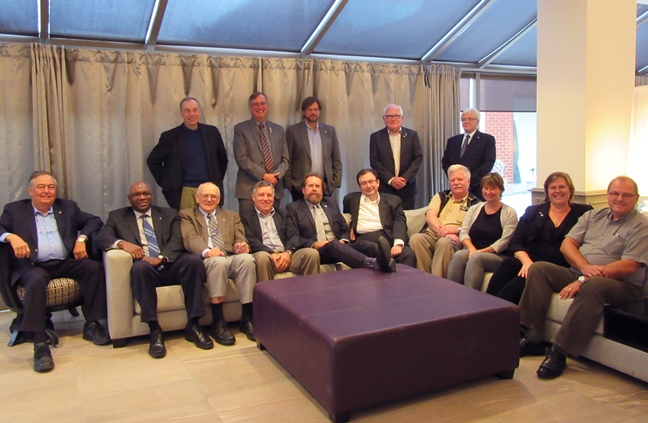
In 2016, the Accreditation Board completed on-site peer reviews of 43 programs at 10 academic institutions to determine if those engineering programs meet or exceed the educational standards acceptable for professional engineering licensure. These peer review teams—composed of close to 100 volunteers—provided information to the Accreditation Board to make accreditation decisions.
In June, accreditation decisions were made based on the reports of these peer reviews, with two new engineering programs being granted accreditation in 2016.
The Accreditation Board also continued to review the documentation required to be completed by the programs and institutions receiving visits. It has delivered workshops to identify workload reduction for programs receiving visits and for Accreditation Board volunteers.
The Engineers Canada Board adopted a number of changes to the accreditation criteria in September 2016. These changes were published in the 2016 Accreditation Criteria and Procedures Report.
Accreditation Forum

In August 2016, over 100 people from the engineering community attended Engineers Canada’s first Forum on Accreditation in Toronto, ON. Representatives from engineering regulators, students, deans, industry and Engineers Canada’s board and committees met to clarify a shared vision for the future of accreditation of engineering education in Canada. Attendees discussed the purpose, outcomes, trends, opportunities and future solutions for accreditation, and these discussions produced recommendations that were voted on and prioritized. Engineers Canada is working with relevant stakeholders to investigate these priorities further to action the recommendations produced by the Forum.
Mutual Recognition Agreements and Mobility
In 2016, Engineers Canada continued to demonstrate its commitment to facilitating the international mobility of licensed engineers. In November, Engineers Canada launched the Engineers Canada Mobility Register, which grants qualified engineers designations that indicate they are part of an exclusive group of professionals who meet a high standard of competence and who are prepared to conduct engineering practices internationally. Engineers on the register have the right to use the APEC Engineer or IntPE designations, showing potential clients and employers that they are an experienced and well-qualified engineer. In some international jurisdictions, these engineers may also experience faster registration as a result of their inclusion on the register.
Engineers Canada also renewed its Mutual Recognition Agreement with the Texas Board of Professional Engineers in June 2016. The five-year agreement is intended to permit the recognition of professional credentials for engineers looking to relocate.
Admissions and Assessments
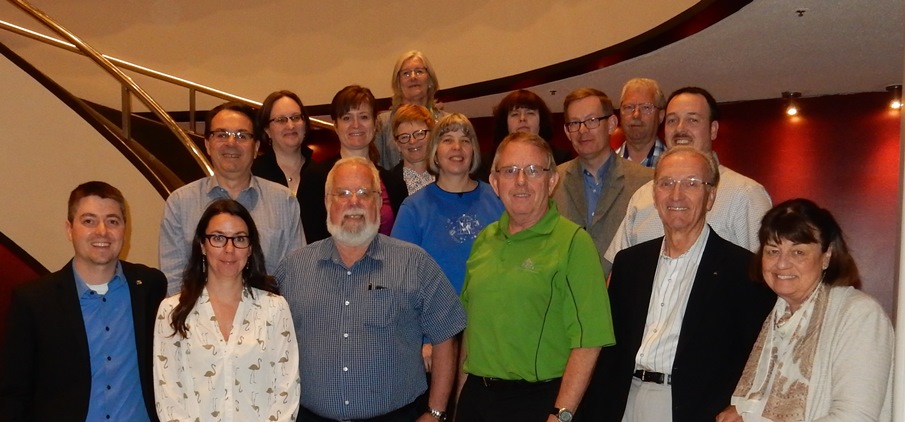
The National Admissions Officials Group (NAOG) met four times in 2016 to discuss registration best practices, facilitate knowledge transfer between regulators on admissions issues across the country, and share information about Engineers Canada initiatives.
Online Competency-based Assessment Project
In September 2016, Engineers Canada decided to partner with APEGBC and expand their online competency-based assessment tool into a pan-Canadian tool, available for use by interested regulators nationally. An initial pilot group consisting of APEGS, Engineers & Geoscientists New Brunswick, Engineers Nova Scotia, and Engineers PEI met in November to discuss approaches for piloting the system, establish the User Steering Group, and determine how to share best practices and lessons learned. The Online Competency-based Assessment Project will enable the national adoption of competency-based assessment of engineering work experience with this online tool.
Discipline and Enforcement
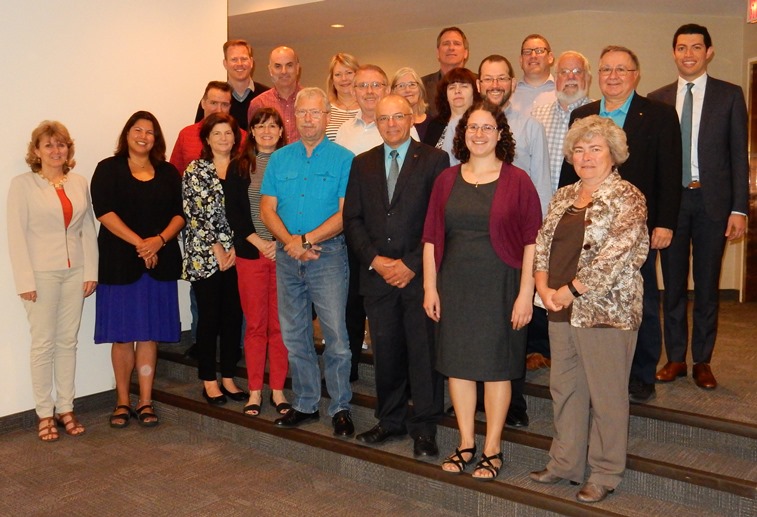
At the annual meeting of the National Discipline and Enforcement Officials Group in June 2016, representatives from each engineering regulator shared updates about current practices, discussed relevant cases and legal challenges, and identified ways to collaborate and share information more effectively.
Professional Practice
2016 saw the creation of a National Practice Officials Group, which has been tasked with providing a liaison among the provincial/territorial regulators on matters pertaining to Professional Practice. The Group will share information, discuss policies, and learn from the promising practices of each regulator as they related to Professional Practice.
The Group had its first meeting in November 2016 to discuss issues pertaining to professional practice, including continuing professional development requirements, quality management programs, and sharing guidelines.
Case law catalogue
Engineers Canada launched an online case law catalogue in 2016, to provide a central repository of case law across Canada that is of interest to regulators and to the engineering profession. The catalogue collects and summarizes case law that could have an impact on the regulation of the engineering profession. The catalogue will be updated as new, relevant cases are decided.
End 2: Confidence in the profession
Engineers Canada works to ensure that stakeholders have evidence that engineers meet high standards, practise with competence and integrity, and that their work and self-regulation benefit society.
Public Perceptions Survey
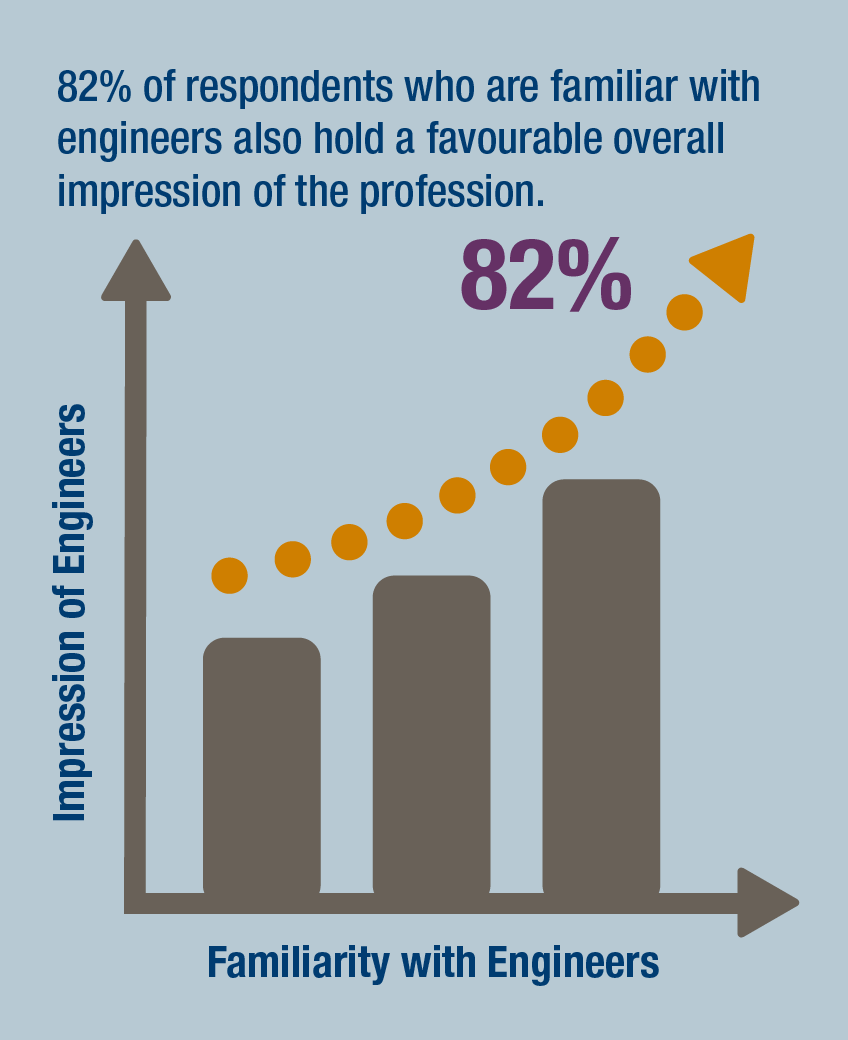
To better understand the public’s perception of the value, impact, opportunities and challenges of the engineering profession, Engineers Canada conducted a survey of Canadians in December 2016. Overall, the findings painted a positive picture for engineering in Canada. Foundational perceptions of the profession are strong and promising, but at the same time, there is room for the profession to increase its presence in the minds of Canadians and to position itself as a leader on key issues facing the country.
National Position Statements
Engineers Canada’s Public Affairs team reviewed and updated all Engineers Canada National Position Statements to bring them up-to-date and ensure that they properly reflect the profession’s position on key issues. In addition, given shifting government priorities and new areas of focus, three new National Position Statements were written and adopted by the Board:
- Science, Technology, Engineering and Math (STEM) education
- Infrastructure on First Nations Reserves and in Remote Communities
- Innovation and Productivity
Issue Statements
New Issue Statements were released in 2016 on three key national issues that relate to engineering and that describe the work that Engineers Canada is undertaking with the provincial and federal governments to advance the interests of the engineering profession:
- Incorporating climate vulnerability assessments into infrastructure design/build requests for proposals
- A national dialogue to modernize maternity and parental leave
-
Professional practice in software engineering
Contact Day 2016
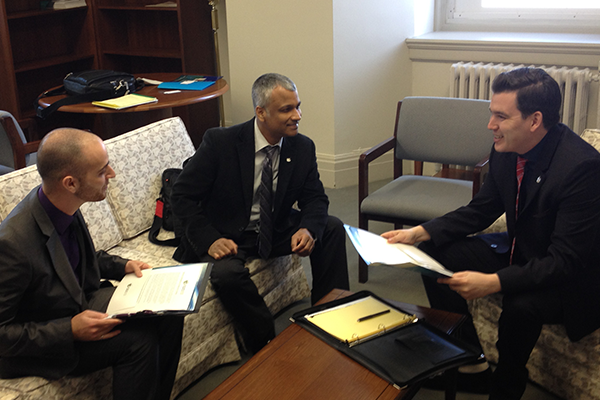
In March 2016, Engineers Canada hosted its most successful Contact Day on Parliament Hill. Members of the Bridging Government and Engineers Committee, an engineering student, and Engineers Canada staff met with 40 members of Parliament (MP) from three parties and representing nine provinces and territories. The meetings were a way of introducing many of the new MPs to the engineering profession, and they touched on a number of the profession’s government relations priority issues, including climate-resilient infrastructure, diversity in the engineering profession, and the important role that engineers play in safeguarding the environment, the economy and Canadians. The meetings also demonstrated to the MPs how the engineering profession could be a valuable resource in providing the evidence base for public policy decision-making.
Senate testimony
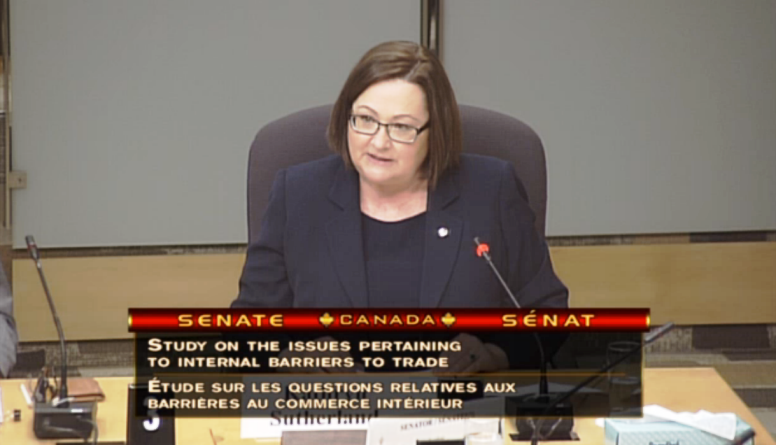
In April 2016, Engineers Canada was invited to provide written and oral testimony to the Standing Senate Committee on Banking, Trade and Commerce during its study on internal trade barriers. The resulting report from the Standing Committee made seven recommendations to help reduce internal barriers to trade and improve labour mobility in Canada, and it looked favourably upon the work that the engineering profession has done to improve the mobility of engineers across Canada.
Government submissions
Engineers Canada also submitted recommendations and comments to the federal government on a range of issues that impact the profession, including:
- The 2016 federal budget
- The draft terms of reference for the expert panel that will advise on the National Energy Board’s modernization
- The draft terms of reference for the expert panel that will advise on environmental assessment processes
- Immigration
- The importance of improving infrastructure climate resiliency
- Community infrastructure
- The Federal Sustainable Development Strategy for Canada, 2016-2019
- Innovation
- Maternity and parental leave benefits
Public Infrastructure Engineering Vulnerability Committee
The past year saw a significant increase in awareness and utilization of the Public Infrastructure Engineering Vulnerability Committee (PIEVC) Protocol, not only among infrastructure engineers, but also in industries that work closely with engineers or that call upon their expertise on a regular basis. For example, the PIEVC Protocol was included for the first time in recommendations made by the Canadian Electricity Association to Canadian electric utilities as a climate adaptation tool that should be integrated into the electricity sector’s planning.
As part of this effort to increase the awareness of the PIEVC Protocol as a climate adaptation tool, the Protocol was presented at eight conferences and at five presentations at forums and annual general meetings. 2016 saw the delivery of seven PIEVC workshops and the completion of five projects using the Protocol, with several more in progress by the year’s end.
Infrastructure Resilience Professional
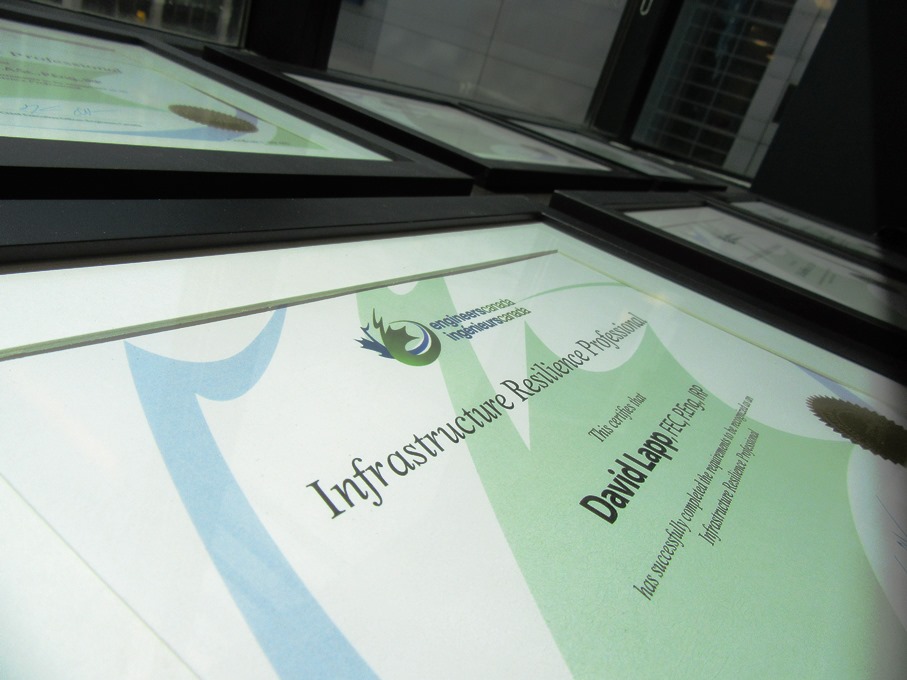
In June 2016, Engineers Canada launched a new Infrastructure Resilience Professional (IRP) certification program for professional engineers. The training that this program provides equips engineers with the additional knowledge and competencies they need to plan, design and manage resilient infrastructure in the face of a changing climate.
The first cohort of IRP program graduates were presented with their designations in June. Infrastructure owners and operators, governments, and the public can have increased confidence that the recommendations and approvals made by these IRP-certified engineers are supported by advanced training and experience in climate vulnerability assessment, risk management and climate adaptation.
World Federation of Engineering Organizations
Engineers Canada continued its participation in the World Federation of Engineering Organization’s Committee on Engineering and the Environment, with a focus on climate change adaptation and the international application of the PIEVC Protocol.
In May 2016, Engineers Canada participated in the UN Framework Convention on Climate Change (UNFCCC) Meetings in Bonn, Germany, where it delivered a workshop on the PIEVC Protocol and hosted a daily “Engineers Hour” to engage delegates and attending engineers on the role of engineering in climate adaptation and mitigation. 2016 also saw the UNFCCC Adaptation Fund supply funding for its first PIEVC project when the protocol was applied to local water systems in Costa Rica. The project got underway in the fall of 2016.
EngStudio
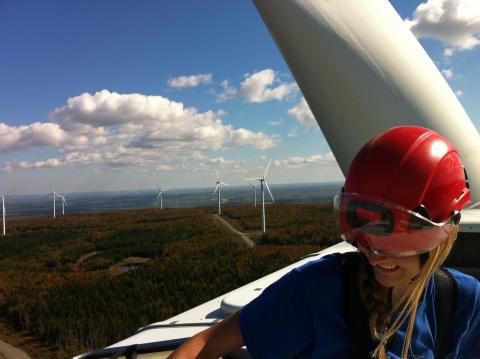
Engineers Canada launched a Photo Contest in November 2016, in an effort to engage the engineering community in celebrating Canadian engineering achievements and Canadian engineers. The contest was hosted on its new EngStudio website, which received approximately 200 photo submissions from individuals across Canada, including professional engineers, engineering students, engineering companies, and others.
Engineers Canada, with the generous support of Great-West Life, selected eight weekly winners, a community favourite winner, and three grand prize winners.
End 3: Sustainability of the profession
Engineers Canada works to ensure that stakeholders have information regarding how engineering is practised in Canada and that engineering is recognized as an attractive profession.
Women in Engineering
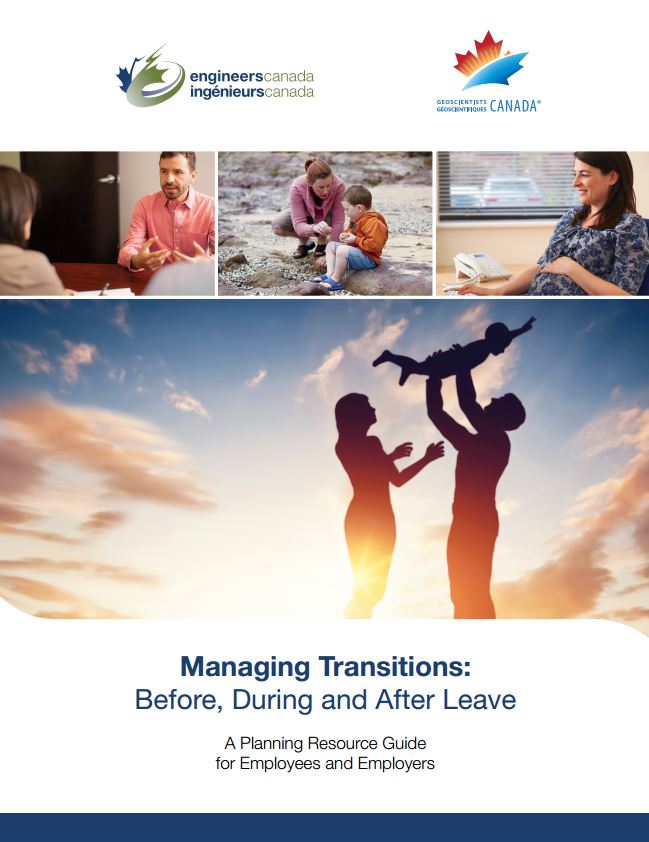
?Engineers Canada published Managing Transitions: Before, During and After Leave in January 2016, a planning resource guide for employers and employees in the engineering and geoscience professions to better plan for and manage maternity and parental leaves.
Engineers Canada’s publication of Managing Transitions coincided with its call for improved maternity and parental leave options and its endorsement of Bill C243—a national maternity assistance program and changes to the Employment Insurance Act, which it believes would be a strong first step towards eliminating barriers that women still experience in and out of the engineering profession. The bill successfully passed the House of Commons in October.

2016 also saw the creation of a 30 by 30 Champions group, composed of representatives from each organization who have pledged support for the 30 by 30 goal—Engineers Canada’s commitment to raising the percentage of newly licensed engineers who are women to 30 per cent by the year 2030. The Champions group held its first meeting to share ideas and promising practices from across the country aimed at increasing the representation of women in engineering.
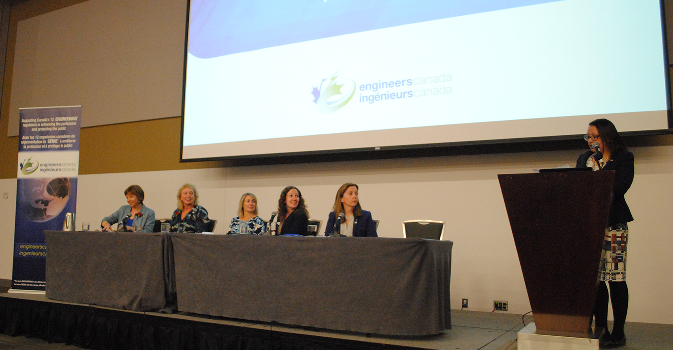
Engineers Canada also hosted five sessions during the 2016 Conference of the Canadian Coalition of Women in Engineering, Science, Trades and Technology (CCWESTT), including a political panel with members of Parliament Marilyn Gladu, P.Eng., Chair of the Standing Committee on the Status of Women and Conservative Critic for Science, and Sheila Malcolmson, NDP Critic for Status of Women.
Indigenous peoples’ representation in engineering
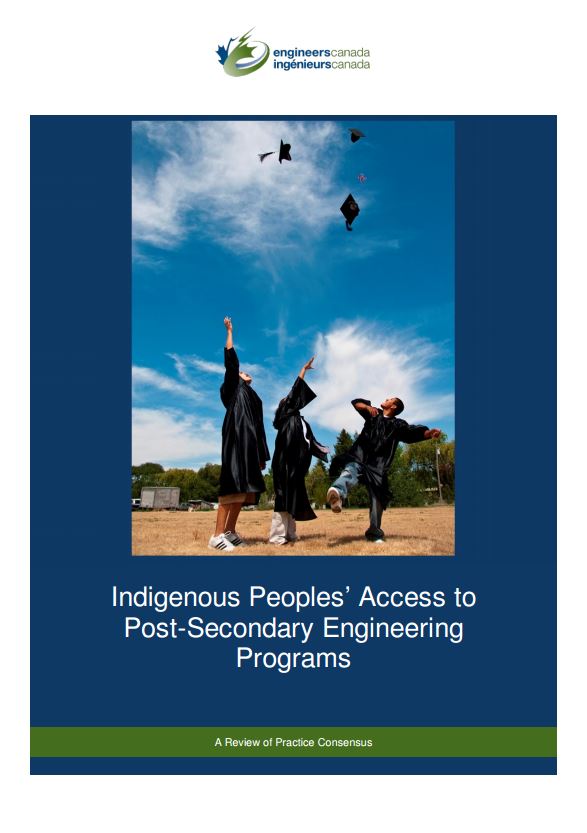
In 2016, Engineers Canada published a new report to support the development of engineering access programs for Indigenous peoples across Canada. Indigenous Peoples’ Access to Post-Secondary Engineering Education, reviews and identifies seven practices that contribute to the success of Indigenous students as they navigate the transition to post-secondary engineering programs. It is hoped that this report will foster a discussion that will lead to better representation of Indigenous peoples in Canadian engineering.
Engineers Canada also attended the American Indian Science and Engineering Society (AISES) National Conference in Minneapolis, MN, in November 2016, and met with the AISES executive to discuss collaborative efforts and the establishment of a Canadian branch.
National Engineering Month
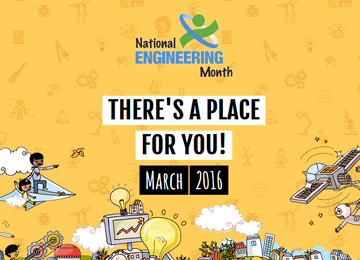
National Engineering Month 2016 saw more than 500 events take place across the country organized by hundreds of volunteers from the provincial and territorial regulators. Engineers Canada introduced a new theme for the year’s celebrations—There’s A Place For You—that aims to demonstrate to young Canadians that with engineering’s wide range of disciplines and uses, they can find something that speaks to them.
Engineers Canada also unveiled a redesigned National Engineering Month website for the 2016 celebrations, with new features that included a place to discover the different engineering disciplines, profiles of everyday engineers, and a Chart Your Course interactive feature that allows visitors to learn how their interests might lead to a career in engineering.
Future City

In 2016, Engineers Canada partnered with DiscoverE, an American not-for-profit organization that has been organizing the Future City Competition in the United States since 1992, which asks middle-school students to imagine, design, and build cities of the future. In September 2016, Engineers Canada brought the competition to Canadian classrooms for the first time, with 50 classrooms from the Durham District School Board in Ontario and eight classrooms in Prince Edward Island participating in the competition.
Girl Guides crest
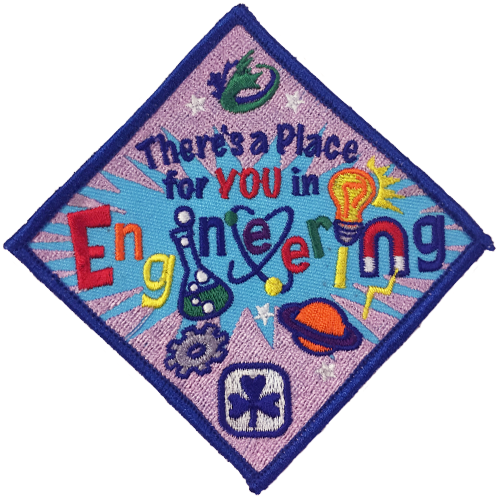
Inspired by Engineers Nova Scotia’s provincial Girl Guides program, Engineers Canada released a new Girl Guides crest in late 2016, to be presented to Girl Guides nation-wide who complete engineering-related activities under the supervision of an engineer or an engineer-in-training. These activities are designed to expose young girls to the engineering that can be found in everyday life and give them an understanding of how the world around them works.
Engineers Canada’s 2016 holiday card
During the 2016 holiday season, Engineers Canada hosted a drawing contest that provided the basis of its unique holiday greetings for the year. The contest asked students from across the country to show us how engineering could make their favourite winter or holiday activity more special. Here is some of what they shared.
Canadian Federation of Engineering Students
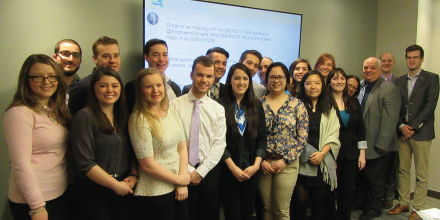
Engineers Canada deepened its relationship with the Canadian Federation of Engineering Students (CFES) in 2016, engaging with more than 600 students at CFES' three key events: the Canadian Engineering Competition, the CFES Congress, and the Conference on Diversity in Engineering. CFES representatives also participated in Engineers Canada’s Forum on Accreditation in August. This strengthened relationship with CFES enables Engineers Canada to better reach out to engineering students to promote the value of becoming a member of the engineering profession once they graduate.
Affinity and Insurance Programs
Engineers Canada continued to grow and augment its insurance plans and financial services for professional engineers in 2016:
- In partnership with Manulife, Engineers Canada launched a Retiree Health and Dental Program to specifically cater to the next life stage with three levels of coverage to suit members’ specific needs and/or budget.
- Engineers Canada, in collaboration with Manulife, put in place a first-time applicant offer of an extra $50,000 of term life insurance for first-time applicants.
- A successful collaboration between TD and Engineers Canada resulted in the continued offering of the home and auto insurance program to OIQ members.
- Engineers Canada, in partnership with Pro-Form Sinclair Professional developed an educational presentation for use by the engineering regulators to build awareness of the Secondary Professional Liability Insurance Program and its increased protection for engineers and geoscientists.
Research
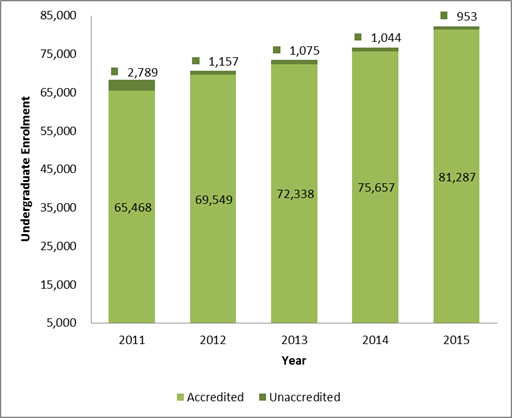
Engineers Canada produced three major research reports in 2015: the Enrolment and Degrees Awarded Report; the National Membership Report; and the Final Year Student Exit Report. These provided information to be used by policy-makers and by members of the engineering community. On the whole, the reports indicated strong growth in the membership of the engineering profession, and in the number of students pursuing an engineering education.
EngScape
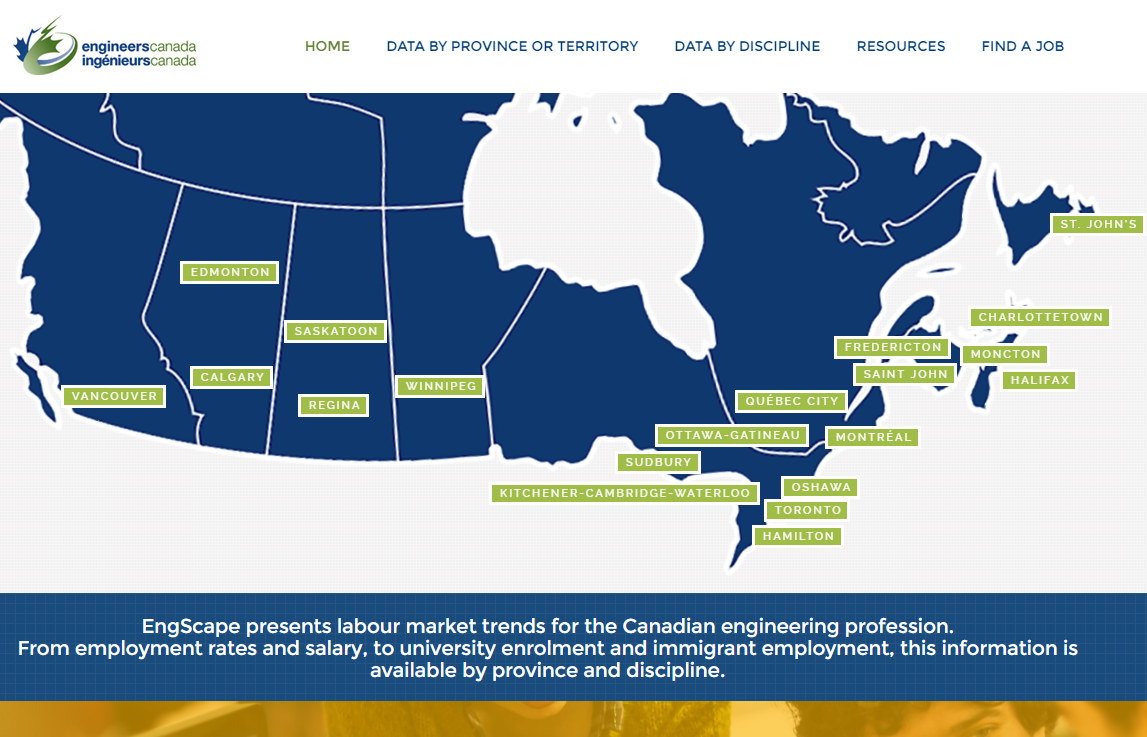
Engineers Canada launched EngScape in 2016, a valuable tool for anyone looking for information about engineering, or attempting to navigate the world of engineering careers. With statistics and data about employment rates, salary, post-secondary enrolment and diversity, EngScape breaks this information down by engineering discipline and by province. EngScape also profiles individual engineers, provides typical job descriptions and requirements, and includes career outlooks for each discipline to give visitors a true sense of the engineering profession. Additionally, the site compiles engineering job postings from a variety of online sources, providing one-stop-shopping for anyone looking for engineering jobs in Canada.
Engineering Change Lab
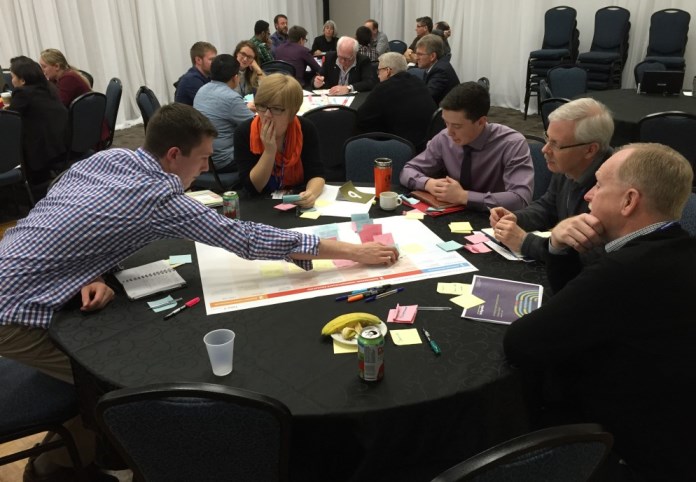
Engineers Canada, a co-founder and champion of the Engineering Change Lab, attended the three Change Lab workshops held in 2016, including one hosted in Ottawa, ON, by the Ministry of Science, Innovation, and Economic Development Services.
The Change Lab also launched a new initiative in August 2016 to create a dialogue on how best to integrate leadership training into engineering curriculum. The two-day inaugural conference of the National Initiative on Capacity Building and Knowledge Creation for Engineering Leadership (NICKEL) gathered 40 engineering academics, industry representatives and policy-makers from across Canada at the University of Toronto. These participants discussed and shared experiences and best practices on leadership, creativity, innovation and entrepreneurship.
End 4: Protection of the engineering term
In order to ensure the public is not misled by persons improperly using engineering terms, titles, images and words in federal corporations and trademarks, Engineers Canada administers a program to protect against misuse.
On behalf of the provincial engineering regulators, Engineers Canada holds and administers a portfolio of intellectual properties that includes official marks and registered trademarks, including registered certification marks. Engineers Canada is the owner of an official mark for each of the following professional engineering designations:
- ENGINEER
- ENGINEERING
- CONSULTING ENGINEER
- PROFESSIONAL ENGINEER
- P.ENG.
- GÉNIE
- INGÉNIERIE
- INGÉNIEUR CONSEIL
- INGÉNIEUR
- ING.
In 2016, Engineers Canada obtained either consent agreements or voluntary withdrawals of 20 trademark applications filed with the Canadian Intellectual Property Office. Twelve of these applications were voluntarily withdrawn or deemed abandoned, one decision was granted in favour of the applicant, and seven consent agreements were reached. Consent agreements are typically entered into by Engineers Canada with engineers or companies that are members of a provincial or territorial engineering regulator.
Working with the provincial and territorial regulators, Engineers Canada provided its consent to 37 requests in 2016 from engineers looking to register a federally incorporated company containing “engineering” or related terms in their names.
Celebrating Engineering Excellence
Awards

Engineers Canada’s annual awards honour outstanding Canadian engineers, teams of engineers, engineering projects, engineering achievements and engineering students.
Back row, from left to right:
- Andrew Mill, FEC, P.Eng., Struct.Eng. (APEGBC) – Meritorious Service Award for Professional Service
- Dr. Donald Mavinic, PhD, FCAE, P.Eng. (APEGBC) – Gold Medal Award
- Mark Lowey – Award of Journalism Excellence in Engineering
- André Marchildon (Engineers Geoscientists Manitoba student member) – Gold Medal Student Award
EcoSmart Foundation Inc.’s Michel de Spot, P.Eng., on behalf of SunMine – National Award for an Engineering Project or Achievement
Front row, from left to right:
- Lianna Mah, M.Eng., FEC, P.Eng. (APEGBC) – Award for the Support of Women in the Engineering Profession
- Marisa E. Sterling, P.Eng. (PEO) – Meritorious Award for Community Service
- Nancy Nelson, M.Sc.(T), P.Eng. (PEO) – Medal for Distinction in Engineering Education
- Selena Wilson, P.Eng. (APEGBC) – Young Engineer Achievement Award
Scholarships
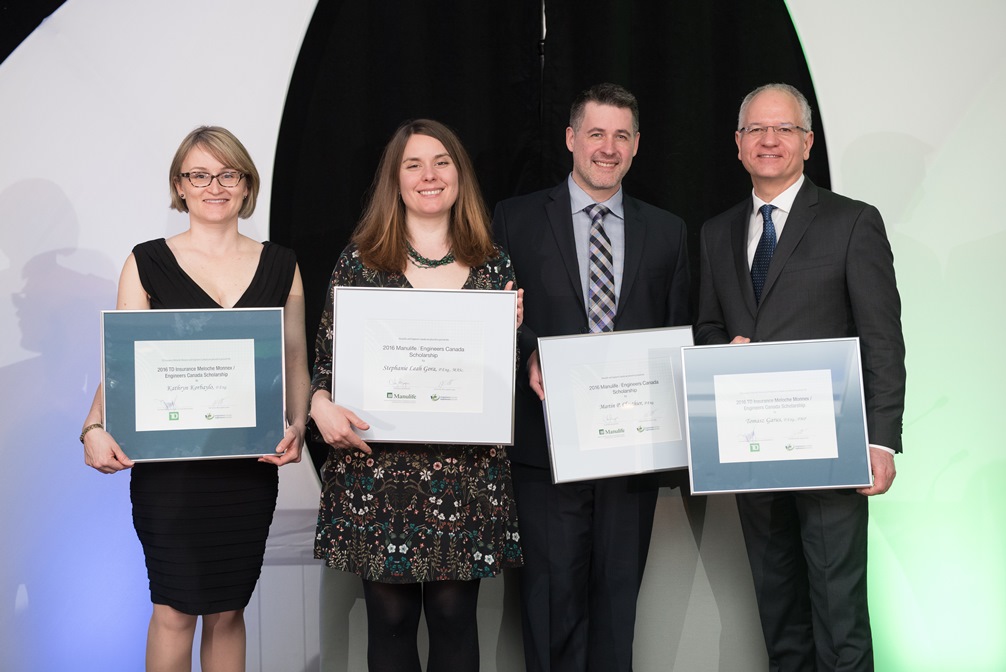
Each year, Engineers Canada, in partnership with Manulife and TD Insurance Meloche Monnex, award six cash prizes totalling $60,0000 to professional engineers who are returning to university.
The recipients of the 2016 scholarships were:
From left to right:
- Kathryn Korbaylo, P.Eng. (APEGA) has returned to school to earn her Bachelor of Education so that she can engage, inspire and mentor young people—especially young women—to pursue careers in science, technology, engineering and math. Throughout her engineering career, Kathryn herself encountered the challenges of being one of only a few women in a male-dominated environment, and she struggled to find a female engineering mentor. Through the student-teacher relationship, Kathryn hopes to inspire the next generation to be curious and interested in these subjects.
- Stephanie Gora, P.Eng., MASc (Engineers Nova Scotia) is developing a new water treatment process based on reusable UV light-activated nanomaterials to substitute for conventional water treatment processes that are chemical-intensive and create a substantial amount of non-reusable waste that must be disposed of in a landfill or released in the environment.
- Martin P. Clouthier, P.Eng. (Engineers Nova Scotia) is looking to advance our knowledge and understanding of dust explosions, a persistent industrial occurrence that continues to cause harm to people, damage to equipment and buildings, and economic loss.
- Thomas Garus, P.Eng., PMP (Engineers Nova Scotia) is combining his 26 years of engineering experience with the business management skills he’s learning in his Executive Master of Business Administration program to propel his engineering team to higher performance. Successes achieved since starting his studies, include growth of his engineering team, increased client satisfaction, and two long-term agreements with major clients for services across their international operations.
Not pictured:
- Sydney C. Dias, P.Eng. (PEO) is pursuing a Master of Business Administration in order to gain a better understanding of the total business environment that contributes to the success of a product. Through his studies, he is marrying his technical abilities as an Engineering Analyst with the business acumen that will allow him to add even more value in his current role, and to take on further challenges and opportunities.
- Jian-Feng Shi, P.Eng., PMP (PEO) is researching software that detects the position and orientation of an object in space using photo or infrared camera images. These measurements then serve as inputs to algorithms that plan trajectories for spacecraft or robot systems.
Fellowships
Professional engineers who have given noteworthy service to the engineering profession through their work with either Engineers Canada or the provincial and territorial regulators can be nominated for an Engineers Canada fellowship.
In 2016, 112 engineers were named Fellows of Engineers Canada:
APEGA
- Fred Apon, FEC (Hon.), P.Geol.
- Andrea Brack, FEC, P.Eng.
- Diego Carducci, FEC, P.Eng.
- Satinger Chopra, FEC (Hon.), P.Geoph.
- Duncan Cook, FEC (Hon.), P.L. (Eng.)
- Christopher Goulard, FEC, P.Eng.
- Brad Hayes, FEC (Hon.), P.Geol.
- Wayne Kosik, FEC, P.Eng.
- Dionyz Kruger, FEC, P.Eng.
- Clark Laing, FEC, P.Eng.
- Brian Marcotte, FEC, P.Eng.
- Craig McFarland, FEC, P.Eng.
- Michael H. Neth, FEC, P.Eng.
- Michael Ricketts, FEC, P.Eng.
- Tanvir Sadiq, FEC, P.Eng.
- Roghoyeh Salmeh, FEC, P.Eng.
- Kapal Sharma, FEC (Hon.), P.L. (Eng.)
- Sanil Sivirajan, FEC (Hon.), P.Geol.
- Morris Sych, FEC, P.Eng.
- Prasad Valupadas, FEC, P.Eng.
- Aldous Walters, FEC, P.Eng.
- Keith Wilson, FEC, P.Eng.
- Dustin Wiltermuth, FEC, P.Eng.
- Ron Wong, FEC, P.Eng.
Engineers Geoscientists Manitoba
- Tristen Cory Alfonse Gitzel,FEC, P.Eng.
- Gervin L. Greasley, CAE, FEC (Hon.)
- Leonnie Natacha Kavanagh, FEC, P.Eng.
- Kristopher Kenneth Kotyk, FEC, P.Eng.
- Gordon Arthur Maher, FEC, P.Eng.
- Lesley Elizabeth McFarlane, FEC, P.Eng.
- Donald Gordan McKibbin, FEC, P.Eng.
- Kerrin Leigh Phyllis Mruss, FEC, P.Eng.
- Gregory Sean Page, FEC, P.Eng.
- Jitendra Paliwal, FEC, P.Eng.
- Roger John Petursson, FEC, P.Eng.
- Neil David Smith, FEC, P.Eng.
Engineers Geoscientists
New Brunswick
- Roger Boudreau, FIC, ing.
- Paul C. Campbell, FEC, P.Eng.
- Bethanie Parker, FEC, P.Eng.
- Bruce G. Wilson, FEC, P.Eng.
APEGS
- David D. deMontigny, FEC, P.Eng.
- Michel Detharet, FEC, P.Eng.
- Melvin K. Leu, FEC, P.Eng.
- John L. Masich, FEC, P.Eng.
- John G. Pearson, FEC (Hon.), P.Geo.
- Robert Stables, FEC, P.Eng.
- Ashok N. Thakkar, FEC, P.Eng.
PEGNL
- Jeff Card, FEC, P.Eng.
- Mark Fewer, FEC (Hon.)
- Leo Quigley, FEC, P.Eng.
- Nicholas J. Whalen, FEC, P.Eng.
- Jennifer Williams, FEC, P.Eng.
Engineers Nova Scotia
- D. Oliver Browning, FEC, P.Eng.
- Christopher E. Davis, FEC, P.Eng.
- Alana C. MacLellan-Bonnell, FEC, P.Eng.
- Byron F. Topp, FEC, P.Eng.
PEO
- Samuel Abd el Malek, FEC, P.Eng.
- Narayana Asogan, FEC, P.Eng.
- Jack Baker, FEC, P.Eng.
- Adam Balogh, FEC, P.Eng.
- Vajahat Banday, FEC, P.Eng.
- Ron Biggs, FEC, P.Eng.
- Trevor Bolt, FEC, P.Eng.
- Guy Boone, FEC, P.Eng.
- Spiridon Bot, FEC, P.Eng.
- Danny Castellan, FEC, P.Eng.
- Chantal Chiddle, FEC, P.Eng.
- James Chisholm, FEC, P.Eng.
- Raymond Chokelal, FEC, P.Eng.
- Brendan Colven, FEC, P.Eng.
- Levente Diosady, FEC, P.Eng.
- Khaled El-Rahi, FEC, P.Eng.
- Fern Gonçalves, FEC (Hon.)
- Robert Lloyd Gorling, FEC, P.Eng.
PEO (continued)
- Yahya Hematy, FEC, P.Eng.
- Ryan Heppler, FEC, P.Eng.
- Sardar Khan, FEC, P.Eng.
- Kenneth Korman, FEC, P.Eng.
- Claude Lagüe, FEC, P.Eng., ing.
- Desmond Kai Pak Lau, FEC, P.Eng.
- Ramiro Liscano, FEC, P.Eng.
- Lawrence Lupton, FEC, P.Eng.
- Nazmy Markos, FEC, P.Eng.
- Richard Mraz, FEC, P.Eng.
- Nancy Nelson, FEC, P.Eng.
- François Nzotungwanimana, FEC, P.Eng.
- Victor Pakalnis, FEC, P.Eng.
- Eugene Puritch, FEC, P.Eng.
- Michael Simpson, FEC, P.Eng.
- David Smith, FEC (Hon.)
- Marisa Sterling, FEC, P.Eng.
- Gabriel Tse, FEC, P.Eng.
- Milan Vyas, FEC, P.Eng.
- Randall Walker, FEC, P.Eng.
- Julie Wedzinga, FEC, P.Eng.
- Dennis Woo, FEC, P.Eng.
- Ryan Worral, FEC, P.Eng.
Engineers PEI
- Matt Collins, FEC, P.Eng.
- Justin Dunn, FEC, P.Eng.
- Nicholas Krouglicof, FEC, P.Eng.
- Heather MacLeod, FEC, P.Eng.
- Michael McKenna, FEC, P.Eng.
OIQ
- Serge Beaulieu, FIC, ing.
- Roland Courtemanche, FIC, ing.
- Guy Dumont, FIC (hon.)
- Terrill Fancott, FIC, ing.
- Serge Gendron, FIC, ing.
- Fassi Kafyeke, FIC, ing.
- Pierre G. Lafleur, FIC, ing.
- Élie Saheb, FIC, ing.
- Karel Velan, FIC, ing.
APEGS
- David D. deMontigny, FEC, P.Eng.
- Michel Detharet, FEC, P.Eng.
- Melvin K. Leu, FEC, P.Eng.
- John L. Masich, FEC, P.Eng.
- John G. Pearson, FEC (Hon.), P.Geo.
- Robert Stables, FEC, P.Eng.
- Ashok N. Thakkar, FEC, P.Eng.
Our people
Board of Directors
Directors

Chris D. Roney, FEC, BDS, P.Eng.
President
Ontario
President and Senior Structural Engineer, Roney Engineering Ltd.
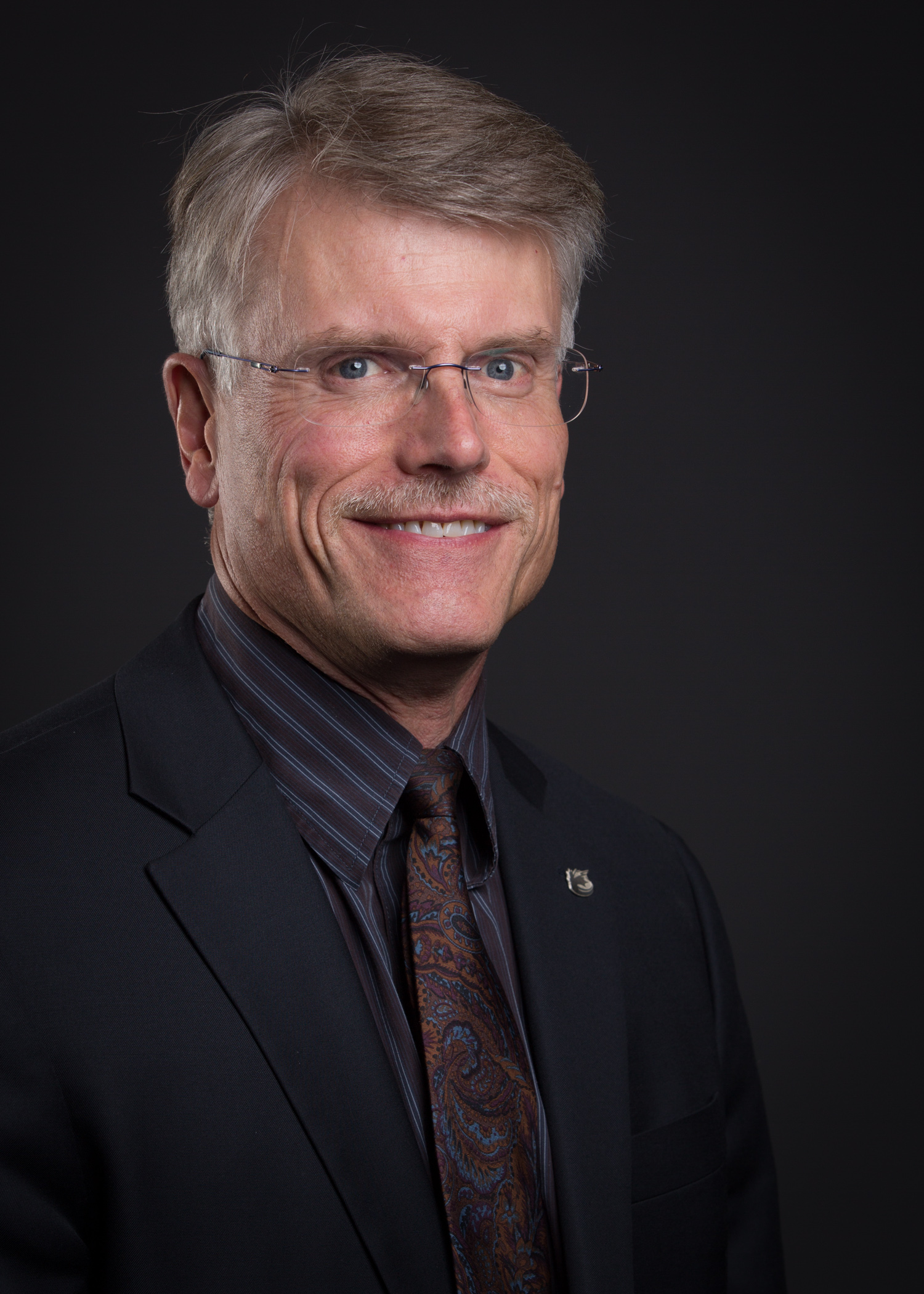
Russ Kinghorn, FEC, P.Eng.
President-elect
British Columbia
Principal, Kinghorn Systems Engineering
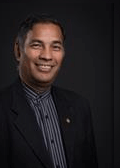
Digvir S. Jayas, FCAE, FEIC, FEC, P.Eng.
Past-President
Manitoba
Vice-President (Research and International) and Distinguished Professor, Biosystems Engineering, University of Manitoba

Kathy Baig, ing., FEC, MBA
Quebec
President, Ordre des ingénieurs du Québec
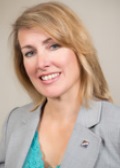
Annette Bergeron, FEC, P.Eng.
Ontario;
Principal, Bergeron Consulting
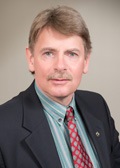
Terry Brookes, FEC, P.Eng.
Northwest Territories
Assistant Director Airport Facilities, Department of Transportation, Government of the Northwest Territories
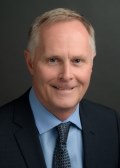
David W. Brown, P.Eng., BDS, C.E.T.
Ontario
Managing Director – TaskForce Engineering Inc.

George R. Comrie, FEC, P.Eng., CMC
Ontario
Management Consultant
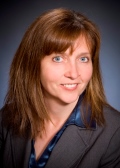
Sarah Devereaux, M.Eng., FEC, P.Eng.
Nova Scotia
Partner, Dillon Consulting Ltd.
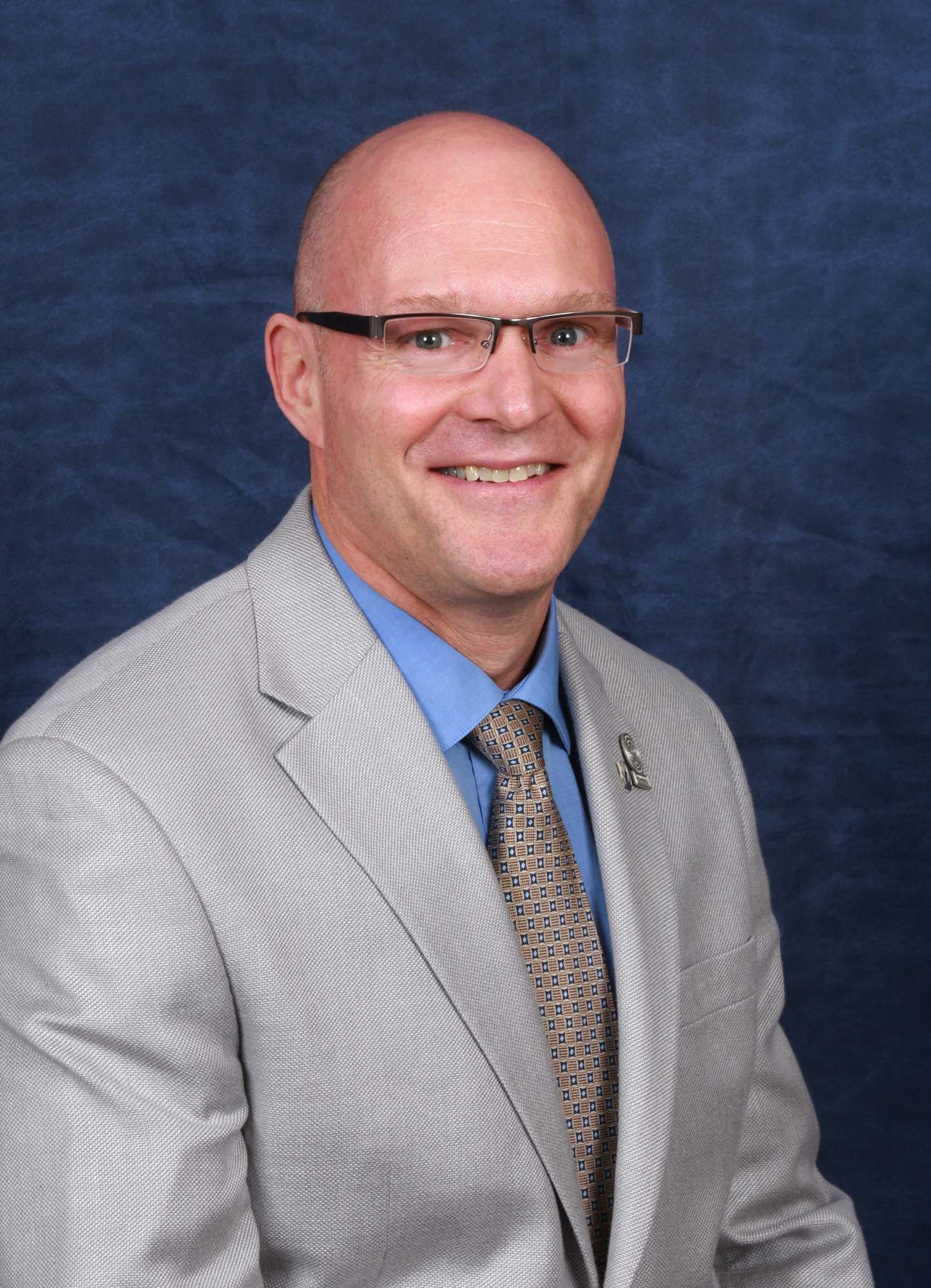
Darryl Ford, FEC, P.Eng.
New Brunswick
Principal/Building Systems Director, Fundy Engineering & Consulting Ltd.
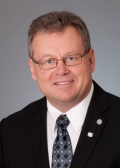
Dwayne Gelowitz, FEC, P.Eng., FCSCE
Saskatchewan
Principal, Water Sector Lead, Stantec Consulting Ltd.
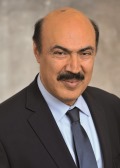
Zaki Ghavitian, M.ing., FIC, ing.
Quebec
Director, Programming and Cost Control, Engineering, Procurement and Construction Group, Hydro Québec
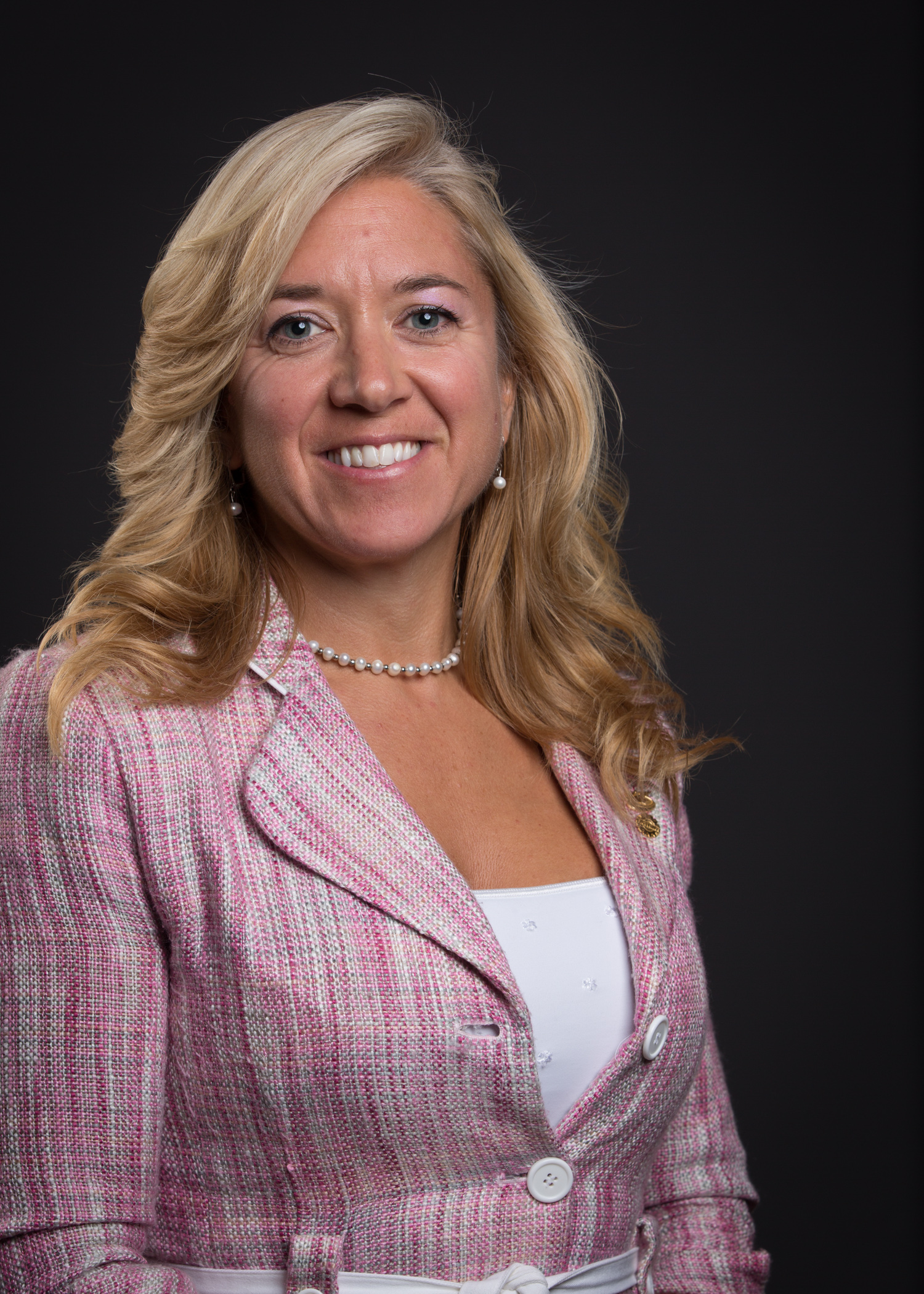
Sandra Gwozdz, FIC, ing.
Quebec
Project Engineer, Bombardier Aerospace

Jeff Holm, FEC, P.Eng., FGC (Hon)
British Columbia
Senior Infrastructure Manager, Allnorth Consultants Limited

William C. Hunt, FEC, P.Eng.
Newfoundland and Labrador
Engineering Manager at Molson Coors Canada
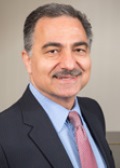
Nazmi Lawen, FEC, P.Eng.
Prince Edward Island
Director of Civil Engineering, Coles Associates Ltd.

David T. Lynch, PhD, P.Eng., FCAE, FEC, FEIC, FCIC, FGC (Hon.)
Alberta
Professor Emeritus (Chemical Engineering), University of Alberta
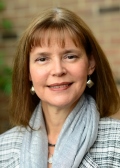
Connie Parenteau, FEC, FGC (Hon), P.Eng.
Alberta
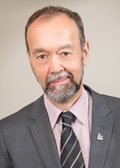
Eric Potvin, ing., M.Sc.
Quebec
Mechanical Engineering Instructor, CÉGEP de Jonquière
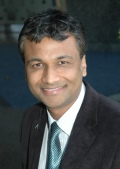
Rakesh Shreewastav, FEC, P.Eng., AVS
Ontario
Manager, Civil Infrastructure, MetroLinx
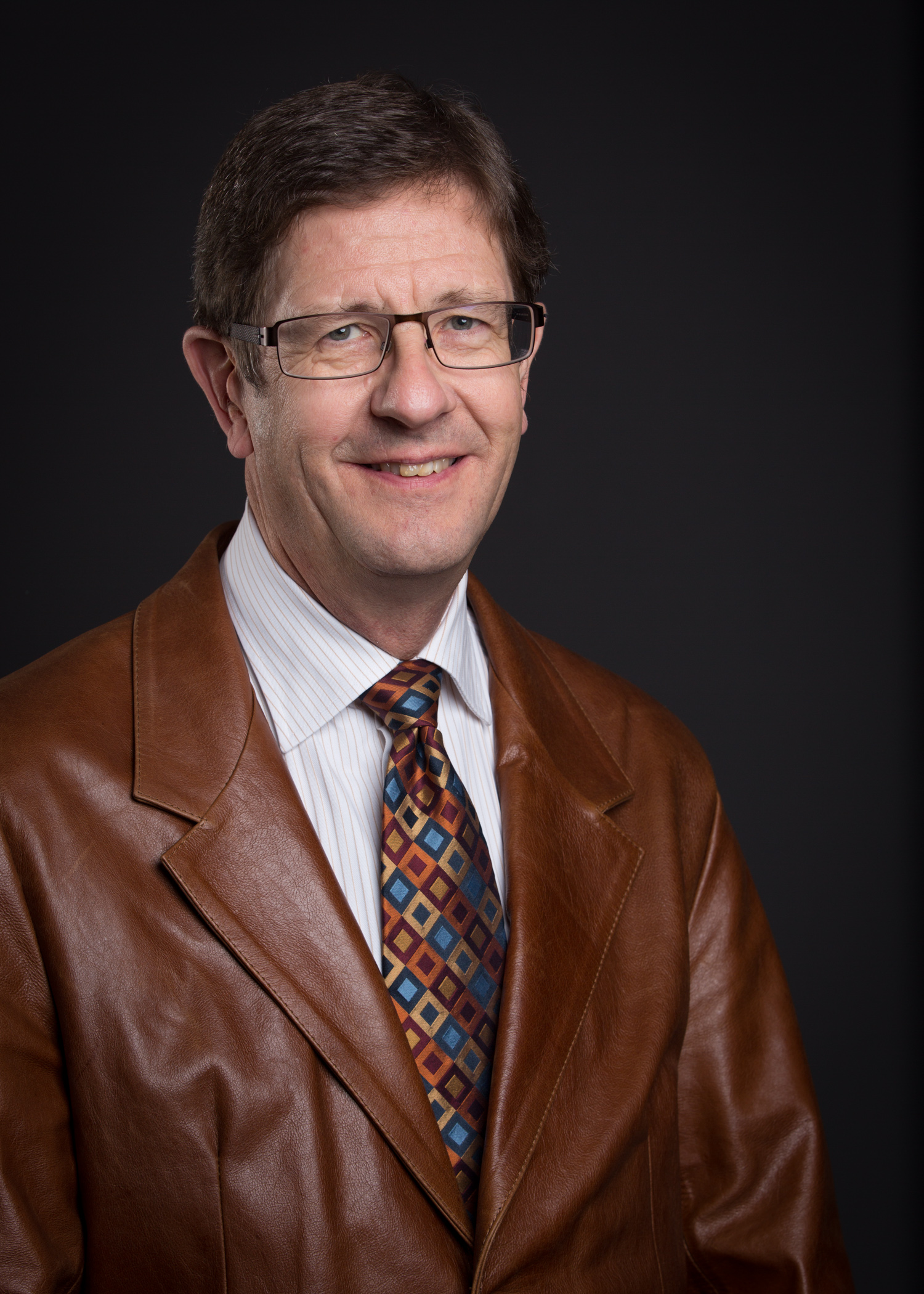
Larry Staples, FEC, P.Eng.
Alberta
Board Chair (Retired), Pressure Pipe Inspection Company
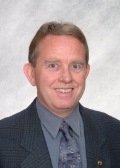
Richard Trimble, FEC, P.Eng.
Yukon
Principal Consultant – Arctic Region, Engineering Practice
Advisors

Ann English, P.Eng.
Chief Executive Officer and Registrar, APEGBC
Chair, Chief Executive Officers Group

D Wayne MacQuarrie, FEC, P.Eng.
Chair, Accreditation Board
(Retired) Chief Executive Office of Prince Edward Island Energy Corporation
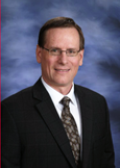
Dr. Greg F. Naterer, PhD, PEng, FCSME, FEIC
Chair, National Council of Deans of Engineering and Applied Science
Dean of Engineering and Professor, Memorial University of Newfoundland

Dennis K. Peters, P.Eng., Ph.D., FEC
Chair, Qualifications Board
Associate Professor and Head of Electrical and Computer Engineering at Memorial University

Stephanie Price, P.Eng., CAE
Interim Chief Executive Officer, Engineers Canada
Staff
Current as of May 2017
- Maria Arrieta
- Colin Brown
- Julia Chehaiber
- Catherine Christofferson
- Jessica Christou
- Marie Claverie
- Chantal Colavizza
- Lisa Dennis
- Randa Dirani
- Shelley Ford
- Brent Gibson
- Linda Gray
- Vicki Kelly
- Johanne Lamarche
- John Langlois
- David Lapp
- Lucy Lefebvre
- Marlene McCourt
- Emily McParland
- Jorge Monterrosa
- David Moreira
- Shayne Morin
- Ivan Ntale
- Alexandra Olivas
- Martha Oram
- Mélanie Ouellette
- Christina Paultre
- Stephanie Price
- Jamie Ricci
- Emily Rowan
- Lorelei Scott
- Daphne Smith
- Kyle Smith
- Jeanette M. Southwood
- Evelyn Spence
- Beryl Strawczynski
- Kathryn Sutherland
- Joey Taylor
- Heidi Theelen
- Joachim Toelke
- Lynn Tremblay
- Dan Villeneuve
- Lynn Villeneuve
- Doris Yee
Our culture

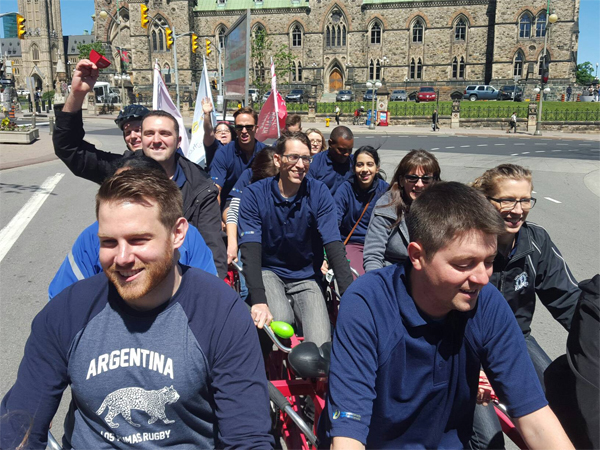
In 2016, Engineers Canada staff continued to demonstrate their deep community involvement and volunteerism:
- In celebration of National Cupcake Day on February 29, 2016, Engineers Canada staff hosted a bake sale to benefit the Ottawa Humane Society. Staff baked hundreds of sweet treats and exceeded the fundraising goal of $1,000.
- Engineers Canada staff participated in the Big Bike Ride for the Heart and Stroke Foundation, raising over $2,160 through staff fundraising efforts and Engineers Canada’s corporate donation.
- Engineers Canada staff voluntarily donate to the Canadian Engineering Memorial Foundation (CEMF) through a payroll deduction.
- In December, the Engineers Canada Social Committee donated $500 to the Door Youth Centre as part of its holiday charitable giving. The Centre is a place for youth to access educational and employment support, health promotion and recreational programs and to establish links to other youth-oriented programs and services in the community.
- Also in December, Engineers Canada organized a holiday food drive that collected food and gifts for High Jinx, a social enterprise in downtown Ottawa that offers meals, products and services—and more importantly, a sense of belonging and community—to those who need it.
Our members
Engineers Canada is the national association of the 12 provincial and territorial engineering regulators in Canada.
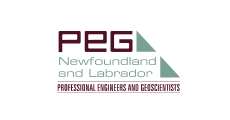
Professional Engineers and Geoscientists of Newfoundland and Labrador (PEGNL)
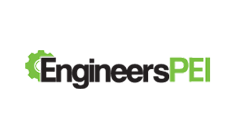
Engineers Prince Edward Island
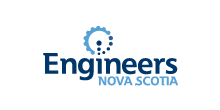
Engineers Nova Scotia

Engineers and Geoscientists New Brunswick
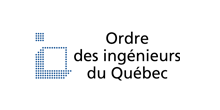
Ordre des ingénieurs du Québec (OIQ)

Professional Engineers Ontario (PEO)

Engineers Geoscientists Manitoba
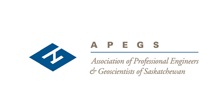
Association of Professional Engineers and Geoscientists of Saskatchewan (APEGS)

The Association of Professional Engineers and Geoscientists of Alberta (APEGA)

Association of Professional Engineers and Geoscientists of British Columbia (APEGBC)
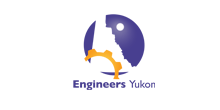
Engineers Yukon
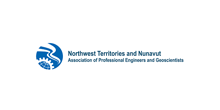
Northwest Territories Association of Professional Engineers and Geoscientists (NAPEG)
Our sponsors
Engineers Canada thanks its partners for their ongoing support and contributions to its 2015 Annual General Meeting and Awards event.
Platinum
Silver

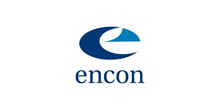
Bronze
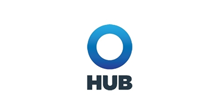
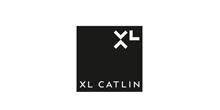
Supporter
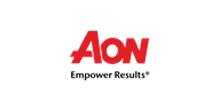
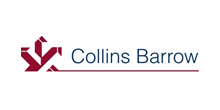
Friends


